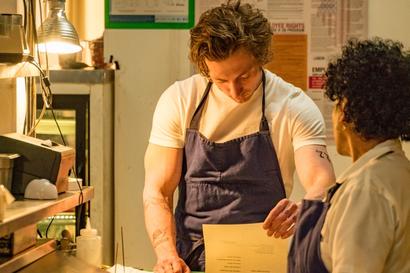The Secrets of Savile Row
From hidden entrances to hidden pockets, we go on the hunt for the well-kept – and well-kempt – secrets of the world’s most sartorial street
There are no secrets on Savile Row,’ says Huntsman’s co-head cutter, Campbell Carey, as he pores over a pile of intricate paper patterns.
An encouraging start, I think to myself.
‘That is,’ he continues, setting down his shears, ‘between the tailors. But there are certainly secrets among us, about the clothes and the clients, that never leave the street.’ And, with that, my ears are pricked – for those are the mysteries that I am here to needle out of the garment-makers. To unpick the unknown, and discover what secrets lie up their impeccably-tailored sleeves.
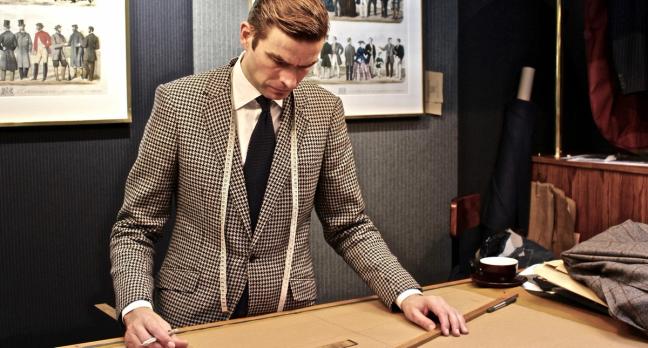
It has been a difficult year for Savile Row. Many key players on the Mayfair street looked set for eviction in 2016, but were thankfully saved when Westminster Council introduced new protective legislation in November. But, despite being an unsettled time, the wobble prompted many of the brands to highlight their heritage and show how closely they are woven into the fabric of London.
But there are certainly secrets among us, about the clothes and the clients, that never leave the street
‘We’ve got so many little stories and secrets people don’t know about,’ Huntsman’s Daisy Knatchbull tells me. ‘And even more they just don’t know to ask about. ‘The stags, for example,’ she continues, pointing at the two huge taxidermied animal heads that greet customers as they enter the store, ‘are sort of our logo now – we even feature them on our ties – but they came to Huntsman by pure coincidence.
‘A businessman came in for a fitting, in the 1920s,’ Knatchbull reveals, ‘and he brought the stuffed stags with him. He was fitted, but then headed off for a boozy lunch, and asked if he could leave them here. ‘He must have had a little too much, as he never came back – for his stags or his suit.’

Despite the delay, Huntsman kept the shooting trophies in storage for years – deciding only to mount them on the wall when they realised the businessman was definitely not just taking his time with dessert. This discretion and decency is typical of the tailoring world – reassuring clients and making them feel more comfortable about making some rather irregular requests.
‘We’ve made special pockets for drugs before,’ reveals Carey, matter-of-factly. ‘A guy was getting married and he wanted a pocket put into his tails for cannabis – and a real rock-n-roll name once got a secret compartment in a jacket for his cocaine stash, too. ‘The clothes themselves have more secrets than the street,’ the cutter continues, whipping the measuring tape from around his neck.
‘We even worked for a magician once, a real character. He’d give our tailors their watches back at the end of fittings. ‘He had a jacket made with all sorts sewn into it. A device under the lapel so he could pull out a lit match, a tube in the lining so objects could fall from pocket to pocket. We’ve made some special pieces over the years.’
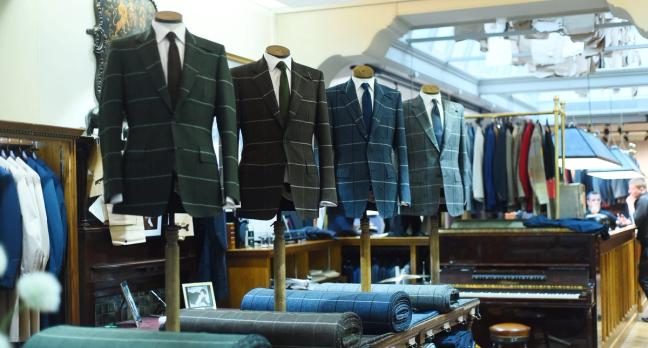
Down the street, at No. 10 Savile Row, Dege & Skinner’s biggest secrets are similarly sartorial. ‘We once had a shirt customer who was a diamond dealer,’ managing director William Skinner reveals to me over a cup of tea. ‘And carrying diamonds in and out of countries wasn’t, let’s say, the thing to do. So, we put a secret pocket into his travelling shirt, on the underside of his arm.
‘There was also an American client,’ Skinner continues, ‘who quite memorably wanted a secret pocket. He always went for traditional three-piece suits but, one day, he came in and asked for a pocket to be hidden into his waistcoat. ‘He told me, “I can’t say what it’s for, but the pocket needs to be shaped like this” – and drew a distinctly gun-shaped outline. It turned out the pocket was for his Beretta, so we fashioned it to sit with the natural curve of his body. That disguised the firearm, and we lined the pocket with leather for hardiness.’
Dege & Skinner’s gun-related secrets don’t end there. A shotgun stands in one of the fitting rooms and, while its barrels are blocked and its firing pins removed, Skinner reveals that it was originally gifted to his grandfather by a pompous client who, during a fitting for shooting apparel, refused to use an umbrella as a fill-in firearm. The client returned to the shop shortly afterwards with the gun – where it has remained for 100 years.

‘We tell clients today that it’s there in case people don’t pay their bills,’ the tailor quips. Many other demanding clients have also graced Dege & Skinner’s books over the years – some of whom have been mysteries even to Skinner himself. The fifth generation tailor tells me that even though he has made military jackets for Michael Jackson – ‘a surreal experience’ – and concierge and doorman uniforms for the staff of Trump Tower – ‘Donald wanted them opulent’ – that his strangest clients have been nameless.
‘Sometimes we get sent measurements and fabric and we will make outfits for clients – despite not knowing who they are. And that is very strange. But it does happen – most notably when we made a military uniform for a certain prominent world figure. I have since worked out who we actually made that for, but that is one secret I will not tell.’
He told me, “I can’t say what it’s for, but the pocket needs to be shaped like this” – and drew a distinctly gun-shaped outline
Likely a Middle Eastern military leader – Dege & Skinner are renowned around the globe for their uniforms, and continue to supply to Oman and Bahrain – you could be forgiven for thinking that Skinner’s anonymous and shadowy client was the strangest and most secretive of Savile Row.
You’d be wrong.
During World War Two, Gieves & Hawkes, the tailors-in-residence at No. 1 Savile Row, assisted the Admiralty with a covert mission to trick the Germans. Curator of the brand’s archives, Peter Tilley, reveals that the tailor’s suits and shears turned cloak-and-dagger for the European operation, and outfitted a dead body to fool the Nazis. Dramatised in the 1956 film The Man Who Never Was, Tilley tells me how Gieves & Hawkes dressed the conjured-up character of Major William Martin for the queasily-named Operation Mincemeat.
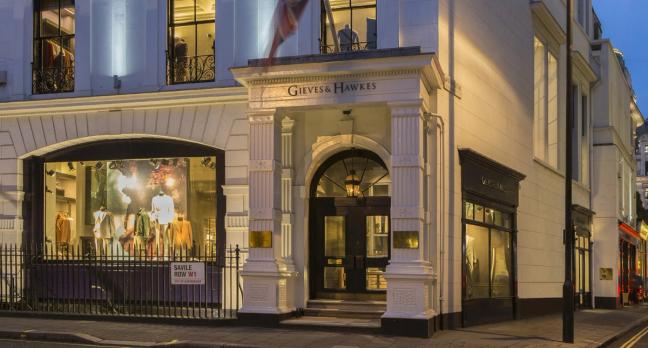
The cadaver – of a homeless ‘ne’er-do-well’ – was to wash up on the shore of Spain, carrying letters that would alert the Axis forces of a fake Allied invasion of Greece. And, to look convincing, the corpse had to be impeccably dressed. Dressing a dead man may be eerie, but the spookiest secret harboured by Gieves & Hawkes is one that haunts the establishment to this day – literally.
‘No. 1 Savile Row is haunted by the ghost of a nightwatchman,’ reveals Tilley. ‘He was a bit of a drinker and, one night in the 1970s, he came back to the store after being at the pub. ‘He’d had a little too much, ended up falling four stories down a staircase and killed himself. He wasn’t found until Monday morning, either,’ the curator adds grimly. ‘People say they still hear footsteps, of him climbing the stairs – they swear the ghost is real.’
And the tailors of Gieves & Hawkes are not alone. It would appear that spectres almost outnumber secrets on Savile Row, as Huntsman also has a phantom of its own. ‘They say the store is haunted,’ says Daisy Knatchbull, before coaxing spine-tingling tales out of the cutters and tailors alike.

‘Savile Row has always been renowned for tailoring,’ explains Knatchbull, ‘but, originally, it was a street of doctors’ surgeries. That’s why the tailors first set up shop here – medical men made money, and they wanted good suits. ‘The building Huntsman occupies today used to be a mental institution – an asylum – and that’s where workers believe the ghost originates from.’
No. 1 Savile Row is haunted by the ghost of a nightwatchman
Huntsman’s security cameras have allegedly captured suits swinging unaided in the dead of night, and footsteps have been heard walking the halls of the underground cutting rooms. Many of the staff regale me with tales of the apparition – with some even managing to scare themselves. I t’s a good thing that there’s more than one way to get out of Savile Row, just in case things get too spooky for this superstitious lot.
Not only are there subterranean tunnels connecting parts of Savile Row underground – passages that originated as 19th century ‘coal holes’ to allow for the easy delivery of coal to the shops – but some of the tailors’ buildings themselves feature secret architectural quirks unknown to the public.
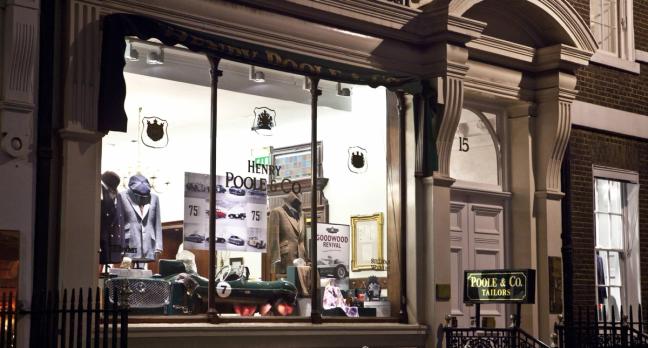
Henry Poole & Co, for example, conceals a secret back door – an entryway that opens out onto unassuming Heddon Street. Anthony Rowland, sales manager at Henry Poole’s No. 15 Savile Row store, reveals how the tailors, who deal principally with CEOs, chairmen and captains of industry, find the concealed, covert exit can come in useful.
‘Potentially, if the customer was looking to evade someone, they could come in and walk out the back door unobserved,’ says Rowland, as we make our way back through the shop to the backstairs. ‘Heads of state, or others who don’t want to be recognised, can leave surreptitiously. We just guide them back here, they throw on a headscarf or whatnot, and off they go.’
And, with that, Rowland swings the door open onto Heddon Street, and sees me on my way. Sitting opposite the aperture is a traditional red phone box – a reminder that this clandestine exit, and the whole mysterious row, is nothing but quintessentially British; buttoned lips, quality yarns, and bursting at the seams with secrets.

Become a Gentleman’s Journal Member?
Like the Gentleman’s Journal? Why not join the Clubhouse, a special kind of private club where members receive offers and experiences from hand-picked, premium brands. You will also receive invites to exclusive events, the quarterly print magazine delivered directly to your door and your own membership card.


